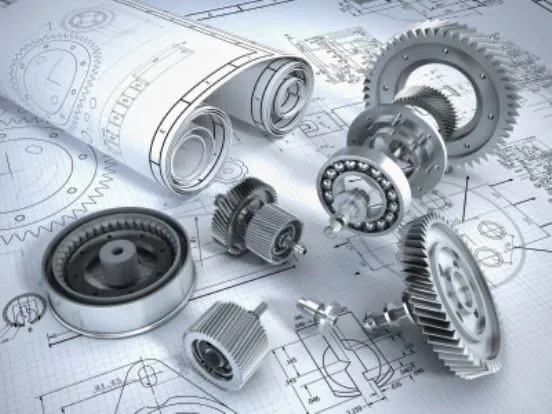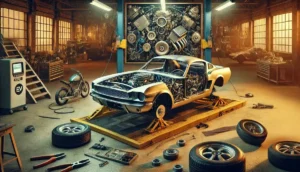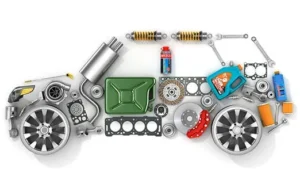The Great Parts Dilemma: OEM vs. Reverse Engineering
Have you ever stared at a broken machine part and felt your stomach drop when you discovered it’s no longer manufactured? You’re not alone. Whether it’s a vintage car enthusiast seeking an impossible-to-find carburetor or an aerospace engineer needing to replace a discontinued aircraft component, the “OEM or reverse engineer?” question is increasingly common across industries.
Every day, thousands of manufacturers, engineers, and maintenance professionals face this exact challenge. Your critical systems need reliable parts, but the original equipment manufacturer (OEM) option isn’t always available or cost-effective. This is where modern reverse engineering enters the picture—but is it truly a viable alternative to OEM parts?
In this comprehensive guide, we’ll explore both options through the lens of real-world applications across automotive, aerospace, medical, and other high-demand sectors. You’ll discover when reverse engineering outperforms OEM solutions and vice versa, based on our extensive experience creating custom-engineered components for the most demanding applications.
What Exactly Are OEM and Reverse Engineered Parts?
Original Equipment Manufacturer (OEM) Parts
OEM parts are components manufactured either by the original equipment producer or by authorized suppliers according to the original specifications. These parts come with several inherent advantages:
- Perfect compatibility with the original system
- Manufacturer warranty protection in many cases
- Known performance characteristics that match original design intent
- Regulatory compliance already established in regulated industries
However, OEM parts face significant limitations that create opportunities for alternatives:
- Supply chain vulnerability when manufacturers discontinue production
- Premium pricing that can be 30-300% higher than alternatives
- Innovation limitations as designs remain static rather than evolving
- Delivery delays when parts aren’t readily stocked
According to a study by the Aerospace Industries Association, over 35% of aircraft maintenance delays stem from OEM part availability issues, highlighting a critical industry challenge.
Reverse Engineered Parts
Reverse engineering involves analyzing an existing component to create a functionally equivalent or improved replacement. Modern reverse engineering combines advanced 3D scanning, precision measurement, and CAD modeling to create parts that can match or exceed OEM specifications.
The process typically follows these steps:
- High-resolution 3D scanning of the original component
- Digital modeling to create an exact CAD representation
- Engineering analysis to understand material properties and functional requirements
- Design refinement that often improves upon original weaknesses
- Prototype development through 3D printing or CNC machining
- Testing and validation to ensure performance meets or exceeds requirements
- Final production using appropriate manufacturing methods
This systematic approach creates parts that deliver several key advantages:
- Availability when OEM parts are discontinued or have long lead times
- Cost reduction of typically 40-70% compared to OEM pricing
- Performance improvements through design optimization
- Customization options to adapt parts for specific applications
- Independence from original manufacturer constraints
RDS employs this process daily across multiple industries, delivering critical components when OEM options fall short.
When Do OEM Parts Win the Battle?
Despite the advantages of reverse engineering, OEM parts remain the preferred option in several scenarios:
1. When Warranty Protection Matters Most
Using non-OEM parts in some systems will void warranty coverage—a risk that’s often unacceptable for newer equipment still under protection. The Federal Trade Commission notes that manufacturers cannot legally void warranties simply for using aftermarket parts, but proving a part didn’t cause failure can be challenging.
2. For Simple, Readily Available Components
For standard components that remain in production and reasonably priced, the OEM option often represents the path of least resistance. The engineering investment in reverse engineering these parts rarely justifies the potential savings.
3. In Certain Highly Regulated Applications
Some aerospace, medical, and defense applications require extensive certification processes for any deviation from OEM specifications. The Federal Aviation Administration maintains strict Parts Manufacturer Approval (PMA) requirements for aircraft components, making OEM parts the default choice in many cases.
4. When Proprietary Technology Is Involved
Components involving proprietary technology, specialized materials, or complex electronics may be difficult to reverse engineer accurately without access to original design specifications.
When Reverse Engineering Delivers Superior Results
Our experience across thousands of projects reveals clear patterns where reverse engineering consistently outperforms OEM options:
1. Revitalizing Legacy Systems and Vintage Equipment
Automotive Restoration Success
The classic car restoration industry faces chronic parts shortages that threaten to sideline valuable vehicles permanently. When a client approached us about a 1967 Shelby Mustang with a cracked intake manifold—a part long out of production—our reverse engineering team delivered a solution.
“We 3D scanned the damaged component, digitally repaired the crack, optimized the internal flow channels based on modern fluid dynamics simulation, and produced a replacement that not only matched the original aesthetics but delivered a 7% horsepower increase,” explains our senior automotive engineer.
This process has been repeated across vintage vehicles from Mercedes-Benz carburetors to Ferrari suspension components, allowing priceless classics to return to the road with enhanced performance and reliability.
2. Addressing Obsolescence in Industrial Manufacturing
Manufacturing facilities often depend on specialized equipment with 20+ year lifespans. When critical components fail and OEM support has disappeared, production lines can face catastrophic downtime.
A paper products manufacturer discovered this when a custom gearbox in their primary production line failed. The original manufacturer had been acquired twice and no longer supported the system. Our team reverse engineered the entire assembly in under a week, making several improvements:
- Upgrading from cast iron to hardened steel for wear surfaces
- Implementing modern sealed bearings in place of the original design
- Adding lubrication channels that were absent in the original
The result was a component with a predicted lifespan 3x longer than the original, produced at 60% of the estimated cost of an OEM replacement (had one been available).
3. Enhancing Performance in Aerospace Applications
The aerospace industry faces unique challenges with long-lifecycle aircraft remaining in service decades after manufacturers have moved to newer designs. According to the National Institute of Standards and Technology, approximately 70% of aircraft maintenance costs relate to aging aircraft with diminishing parts availability.
When an aircraft maintenance operation needed replacement turbine blades for an older regional jet model, our reverse engineering team didn’t simply duplicate the original part. Using computational fluid dynamics and modern materials science, we created a replacement with:
- Improved thermal resistance through advanced coating technology
- Enhanced aerodynamic efficiency by refining the blade profile
- Extended service life through stress-optimized design
These performance improvements delivered significant operational benefits beyond simply keeping the aircraft flying.
4. Creating Custom Solutions in Medical Applications
Perhaps nowhere is the value of reverse engineering more evident than in personalized medical applications. Standard OEM medical devices often fail to accommodate individual patient anatomy and needs.
Our work creating custom prosthetics demonstrates this clearly. By 3D scanning a patient’s unique anatomy and reverse engineering standard prosthetic components, we develop solutions that:
- Match the exact anatomical requirements of each patient
- Incorporate customized functionality based on lifestyle needs
- Reduce adaptation time through precise biomechanical matching
- Lower costs compared to premium OEM alternatives
A recent project for a partial hand prosthesis resulted in a device with 30% greater functional range and 40% improved comfort compared to standard options, at a cost 50% below comparable OEM solutions.
Critical Success Factors for Reverse Engineering Projects
Not all reverse engineering efforts yield optimal results. Our experience points to several factors that distinguish successful projects:
1. High-Precision Measurement and Scanning Technology
Accuracy begins with data capture. Modern metrology equipment can capture surface details down to 0.001mm, ensuring dimensional precision that matches or exceeds original manufacturing tolerances.
2. Deep Understanding of Material Properties
Simply matching dimensions isn’t enough. Understanding material composition, heat treatment, surface finishes, and other properties is essential for creating truly equivalent parts.
3. Functional Performance Analysis
The best reverse engineering considers not just what a part looks like, but how it functions within a system. This requires expertise in mechanical engineering, stress analysis, and system dynamics.
4. Design Optimization Opportunities
Successful reverse engineering often improves upon original designs by addressing known failure points, incorporating advanced materials, or enhancing functional performance.
5. Appropriate Manufacturing Methods
The production method must align with the part requirements. Sometimes this means matching the original manufacturing process; in other cases, modern alternatives like additive manufacturing may deliver superior results.
Industry-Specific Considerations
Automotive Industry
In automotive applications, reverse engineered parts must balance:
- Aesthetic authenticity for restoration projects
- Performance requirements for functional components
- Material compatibility with existing systems
- Cost considerations for production volumes
Our automotive clients typically see a 40-60% cost reduction compared to limited-production OEM parts while gaining performance improvements not possible with original designs.
Aerospace Applications
Aerospace reverse engineering demands the highest precision due to:
- Safety-critical functions with zero margin for error
- Extreme operating environments including temperature, pressure, and vibration
- Regulatory compliance requirements for airworthiness
- Long service life expectations often measured in decades
Our aerospace work follows stringent quality control protocols that meet Department of Defense and FAA standards for critical components.
Manufacturing and Industrial Equipment
Industrial equipment reverse engineering focuses on:
- Minimizing downtime through rapid production
- Enhancing durability to extend maintenance intervals
- Improving efficiency through design optimization
- Ensuring compatibility with existing systems
These priorities have helped manufacturing clients reduce maintenance costs by an average of 35% while improving equipment reliability.
Medical Device Applications
Medical device reverse engineering requires special attention to:
- Biocompatibility of all materials
- Patient-specific customization for optimal outcomes
- Regulatory compliance with FDA and other authorities
- Seamless integration with existing medical systems
Our healthcare projects deliver personalized solutions that improve patient outcomes while reducing costs for providers and patients alike.
The Technology Behind Modern Reverse Engineering
The reverse engineering capabilities available today far exceed what was possible even a decade ago. At RDS, our 3D scanning and reverse engineering services leverage several advanced technologies:
Advanced 3D Scanning Systems
Modern structured light and laser scanning systems capture millions of data points to create highly accurate digital representations of physical objects. These systems can detect surface features invisible to the human eye, ensuring dimensional accuracy within microns.
Computational Analysis Tools
Finite element analysis, computational fluid dynamics, and other simulation tools allow engineers to understand not just how a part is shaped, but how it performs under load, stress, heat, and other factors.
Additive Manufacturing Capabilities
3D printing technologies enable rapid prototyping and, increasingly, final production of complex parts that would be difficult or impossible to manufacture through traditional methods.
Materials Science Advancements
Modern reverse engineering benefits from expanded material options that often surpass what was available when original parts were designed, allowing for improved performance characteristics.
Making the Right Choice: OEM vs. Reverse Engineered Parts
To determine whether OEM or reverse engineered parts are right for your application, consider these key questions:
- Availability: Is the OEM part readily available, or is it obsolete/discontinued?
- Cost impact: What is the price difference, and does it justify the engineering investment?
- Performance requirements: Could a redesigned part improve system performance?
- Timeframe: How quickly do you need the solution implemented?
- Regulatory considerations: Are there certification requirements that favor one approach?
- Long-term strategy: Is this a one-time need or an ongoing requirement?
Our engineering team conducts this analysis for every project, ensuring the selected approach aligns with both immediate needs and long-term objectives.
Case Study: Wind Turbine Blade Optimization
A renewable energy company operating a wind farm with aging turbines faced decreasing efficiency and increasing maintenance costs. The OEM had discontinued the specific blade design and offered only a complete turbine replacement at prohibitive cost.
Our approach combined multiple services:
- 3D scanning of existing blades to create precise digital models
- Aerodynamic analysis to identify efficiency limitations
- Product design and 3D modeling to optimize the blade profile
- Structural engineering to ensure durability under all conditions
- Material selection focusing on lightweight, high-strength composites
- Production of replacement blades with enhanced performance characteristics
The results demonstrated the power of modern reverse engineering:
- 14% increase in energy production efficiency
- 40% reduction in maintenance requirements
- 65% cost savings compared to full turbine replacement
- Extended operational lifespan by an estimated 12 years
This project highlights how reverse engineering can transform from a simple replacement strategy to a significant performance enhancement opportunity.
The Future of Parts Manufacturing and Supply
The tension between OEM and reverse engineered parts reflects broader changes in manufacturing and supply chain management:
- Distributed manufacturing is reducing dependence on centralized production
- Digital inventory is replacing physical warehousing of spare parts
- On-demand production is becoming viable for more component types
- Design evolution continues even for legacy systems
These trends favor companies with strong reverse engineering capabilities and the flexibility to produce parts on demand. According to McKinsey & Company, organizations that embrace these approaches reduce inventory costs by up to 20% while improving parts availability.
Conclusion: Strategic Parts Management for the Future
The choice between OEM and reverse engineered parts isn’t simply about finding the cheapest option—it’s about developing a strategic approach to maintaining and improving your critical systems over their entire lifecycle.
For vintage automotive restoration, advanced aerospace applications, industrial manufacturing, or medical device development, the optimal strategy often includes both OEM and reverse engineered components, deployed strategically based on availability, cost, performance, and regulatory considerations.
Our experience across thousands of projects in diverse industries confirms that reverse engineering, when executed with precision, delivers components that not only match but frequently exceed OEM parts in performance, durability, and value.
As supply chains grow more complex and product lifecycles accelerate, the ability to reverse engineer critical components provides insurance against obsolescence and a pathway to continuous improvement. The organizations that master this capability gain a significant competitive advantage through reduced downtime, lower maintenance costs, and enhanced system performance.
Take the Next Step
What component challenges are you facing in your operations? Are OEM parts becoming difficult to source, prohibitively expensive, or performance-limiting? Share your experience in the comments, or explore our services to discover how modern reverse engineering might transform your approach to parts management.
For industry-specific insights and case studies, visit our blog where we regularly share detailed analyses of successful projects across automotive, aerospace, manufacturing, and other sectors.
Have you encountered a situation where reverse engineering outperformed an OEM part? Or have you faced challenges with non-OEM components? Join the conversation below!





